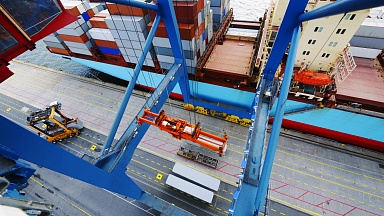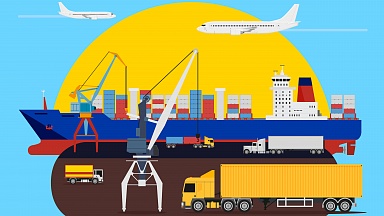At the sidelines of the Eastern Economic Forum, discussions focused on leveraging innovative solutions to ensure the safe and stable movement of vessels along the Northern Sea Route — a pivotal component of the Trans-Arctic Transport Corridor.
Today, successful Arctic navigation demands a comprehensive approach — from historical reflection and analysis of contemporary technological trends to the involvement of all stakeholders.
Andrei Nikitin underscored that the Russian Ministry of Transport is currently engaged in a critical task — revitalizing transport science, both fundamental and applied. The Ministry is closely collaborating with the Russian Academy of Sciences, the Maritime Board, and Rosatom on this initiative.
«We stand at the threshold of a new era — over the next 20 to 30 years, key scientific breakthroughs will be tied to transport. Although we do not always speak loudly about it, significant time and effort are being dedicated to building a robust scientific foundation and training personnel. After all, regardless of technology, it will be people — engineers, captains, logisticians — who drive the industry forward.»
Innovative domains were also addressed, with unmanned technologies highlighted as a key priority. «These technologies are already actively employed on rivers, and Russia has gained experience with unmanned vessels in the Baltic. Russia became one of the first nations to integrate terminology and practices for unmanned shipping into international maritime law. We are pioneers in this field.»
Additionally, the creation of a National Digital Transport and Logistics Platform was discussed. According to the Minister of Transport, transport development cannot occur in isolated sectors. Multimodality must be ensured — the seamless integration of all transport modes, achievable only through digital logistics.
In turn, Sergei Vakhrukov emphasised that the Northern Sea Route is not merely a freight artery but a foundational element of the emerging Trans-Arctic Transport Corridor. However, when designing this new corridor model, it is vital to think beyond maritime transport alone. A cohesive spatial logistics project, aligned with the nation’s sustainable development goals, is essential.
«The Trans-Arctic Corridor must become a sovereign international transport route, facilitating not only raw material shipments but also attracting major cargo flows by diverting them from congested and vulnerable routes. Today, over 80 percent of global trade occurs via sea, with existing corridors facing bottlenecks and rising costs. Under these conditions, the Arctic route can emerge as a viable alternative. Estimates from various institutions, including our partners, suggest it could capture at least 15 percent of Suez Canal traffic.»
Rosatom Director General Alexei Likhachev, in his remarks, drew parallels between the pioneers of the Northern Sea Route and modern explorers, noting that five centuries of its development have formed a chronicle — at times tragic, yet undeniably heroic. The Arctic has always drawn those prepared to face its challenges. He also highlighted the substantial accumulated expertise in developing the route.
Vladislav Kuznetsov delved into strategic regional development projects aimed at diversifying the economy and reinforcing Chukotka’s role in Arctic logistics infrastructure.


